
A lot of us get images of six-packs and sit-ups when the “core” comes to mind, but that core of yours was made for many tasks, the most important of which is breathing.
Learn how to use an “umbrella” breath (or diaphragmatic breath) to strengthen and protect your core during pregnancy, postpartum and allllllll the things you do in a day.
Wait. Breathing? Surely you’ve been breathing correctly without professional instruction? You’re alive, after all.
Let’s think of it less like ‘right and wrong’ and more like: how well are these breathing muscles getting moved?
That’s right. Breathing muscles.
In fact, the first and most important movement a human body must make is barely visible from the outside. It’s the movement of the core muscles to respire; to draw in air and to manage the resulting changes in intra-abdominal pressure. 👇 More on that later.
Is there a ‘right way’ to breathe?
When you were a kid, you moved. You squatted, rolled, crawled, ran, hung, jumped, and reached. Your spine was aligned well, and you breathed calmly and deeply. Except when your mom was trying to get somewhere in a hurry, then you had a meltdown just like your own kid does now, proving we all get what we deserve in the end, right?
Now, you’ve been sitting for 30 (40, 50…) years. You slouch over a computer, then hunch over a phone, you strain over a steering wheel and cradle and carry smaller people on the front of your exhausted body.

Your ribs, pelvis and spine are likely not *quite* aligned as they were beofre becoming a working adult and parent. That’s especially true if you’re epxeriencing core and pelvic floor symptoms, or pain.
As a result, the core muscles between and around the ribs and pelvis aren’t empowered to function as they should. Many postpartum people and desk workers breathe shallowly, hold our breath, and use our superficial abdominal muscles instead of our deep core (breathing) muscles, and our core strength suffers as a result.
Learn to breathe deeply and you can feel more energetic, calm your nervous system, reduce postural pain, enjoy better lung capacity when exercising, and enjoy better, more responsive core and pelvic floor muscles.
We think Julie Wiebe, PT does a stellar job of illustrating the role that breathing and intra-abdominal pressure play in core and pelvic floor function.
How do I know if I’m breathing properly?
Try this to get a visual of how you’re managing your own intra-abdominal pressure.
Sit or stand in front of a mirror and place one hand on your chest, the other on your abdomen. Breathe in and out and notice what happens.
✨ Do your shoulders rise?
✨ Does your belly move?
✨ Do you “swallow” the breath and hold your breath between inhale & exhale?
✨ How low in your body do you feel the breath reaching?
One of the most important and overlooked muscles of the body is the diaphragm. The diaphragm moves downward into your abdominal cavity as you inhale, and your pelvic floor descends with it to make room for the air. As the diaphragm rises back up on the exhale, your pelvic floor and transversus abdominus release back to their resting state.
It’s essential that breathing is full and deep, so these muscles can stretch and contract to maintain their suppleness and strength.
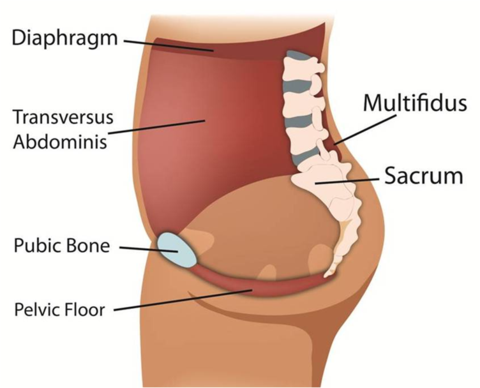
How to do core breathing in postpartum
Lie on your back or side with one hand on your rib cage and one on your lower abs. Your knees should be bent, and your lower back should be gently, naturally arched — not wildly arched, but don’t tuck your tail, either.
⬇️ Inhale through your nose. Feel your ribs expand into your hand and unfold like an umbrella over your belly. Imagine filling them with air like an inner tube and keep the neck and shoulder muscles still.
At the same time, your abdominal and pelvic floor muscles are gently filling up and relaxing as well. Imagine your pubic bone and tailbone spreading apart, lengthwise, and the fibres between them unfolding like an accordion. Your belly is moving but you’re not using force to push it out.
⬆️ Exhale through your mouth. Blow all of the air out, slowly, as if you were blowing out through a straw. Feel your ribs draw down away from your hands.
At the same time, your deep, lower abdominal and pelvic floor muscles settle back inward and upward, forming a solid base to your core once again. Your spine does not tilt and your butt does not clench.
Continue for 10 breaths.
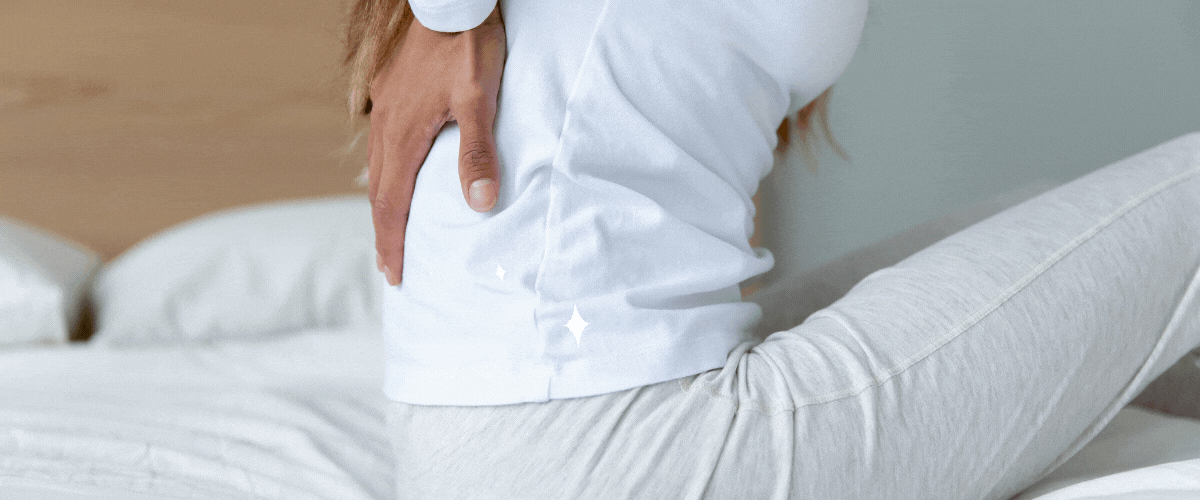
Could your aches and pains be S.O.S messages from your core + pelvic floor?
FREE CHECKLIST: Get instant access and check yourself for these 9 surprising core symptoms
When to practise core + pelvic floor breathing
Try it lying down. Seated. Standing. In the car. While you watch TV.
One of our fave times to bring our attention to the core is during our stretches and mobility work. Try it and notice your ribs and pelvic floor moving as you breathe deeply.
The exhaled position, with a stabilized spine and gently contracted core, is often the best possible position for lifting weights, kids, and things around the house.
💡The next time you lift a heavy box or hoist your preschooler up, inhale and open your ribs like an umbrella, then exhale through your mouth and feel your core “lock” into position before you lift. With practice, you will breathe properly throughout the day and especially when challenging your core with a lift, jump, or balance exercise.
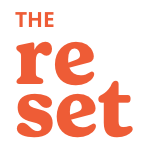

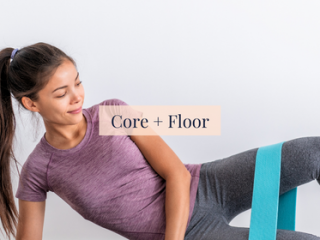
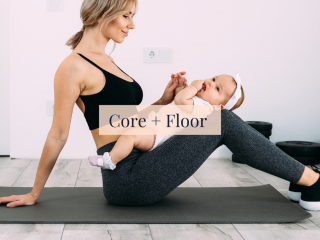




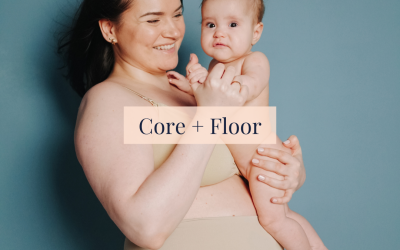
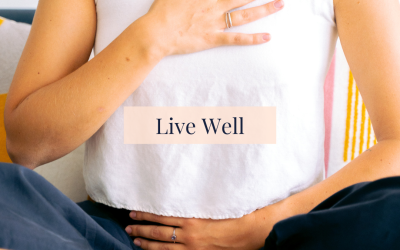

0 Comments